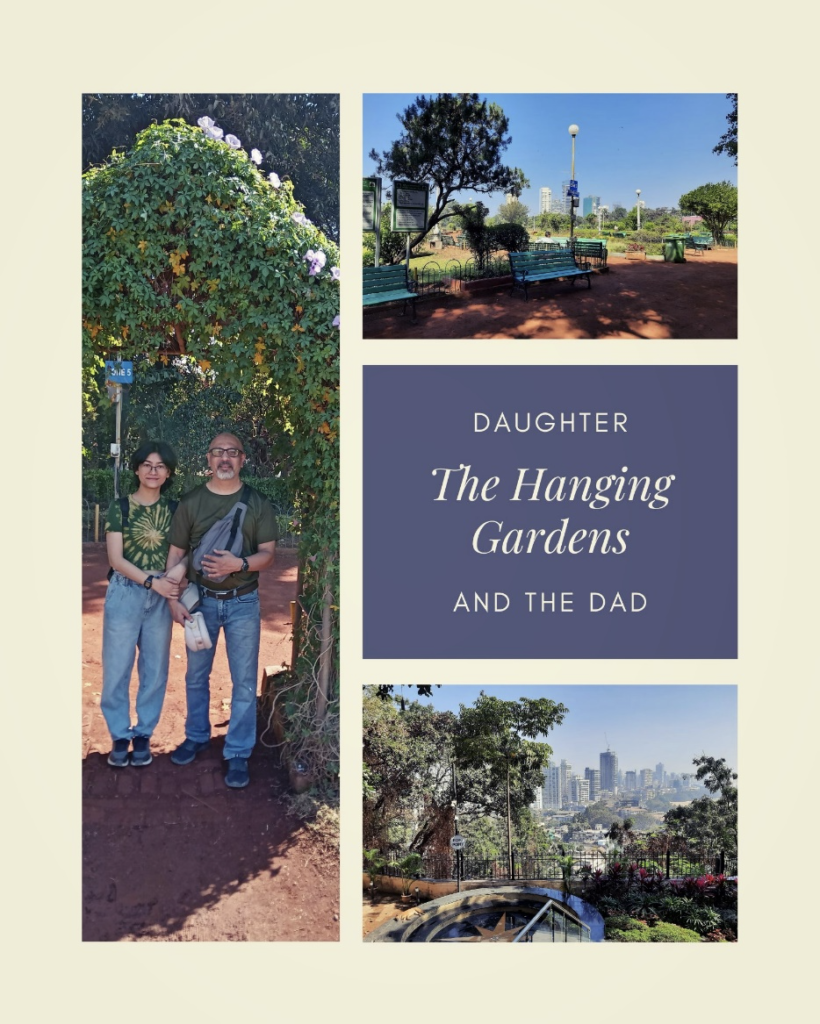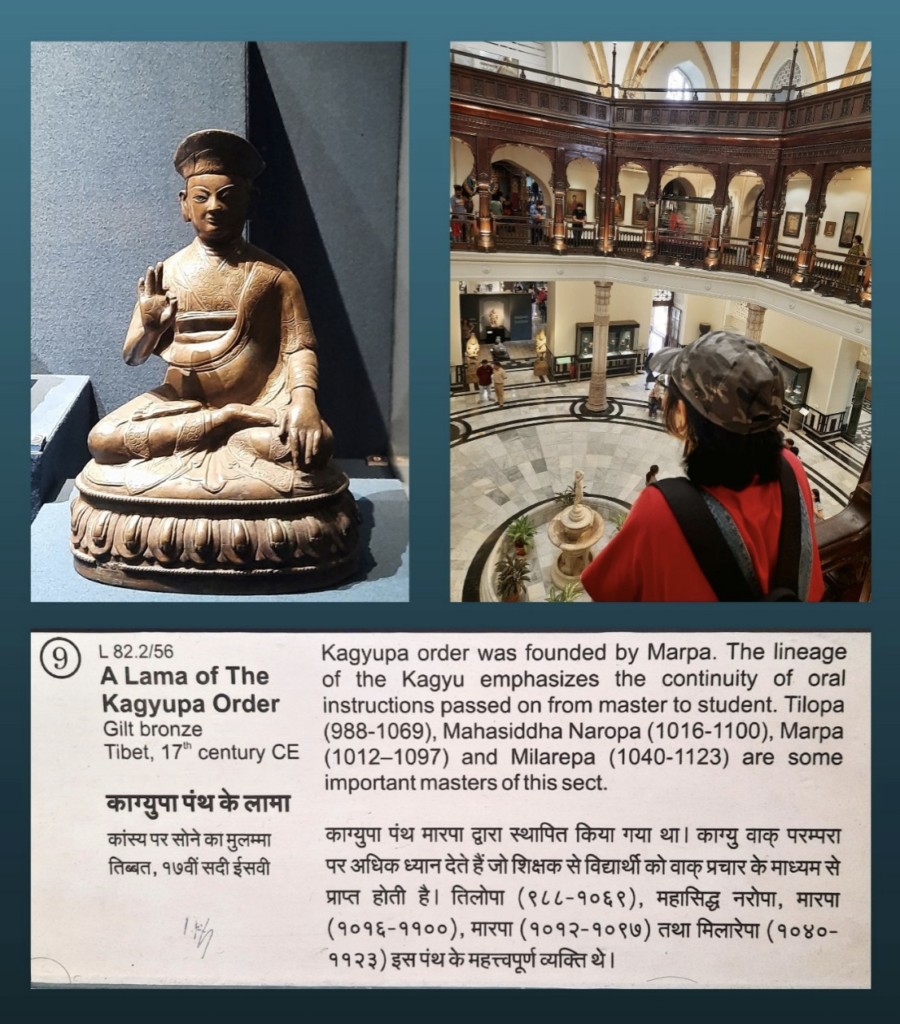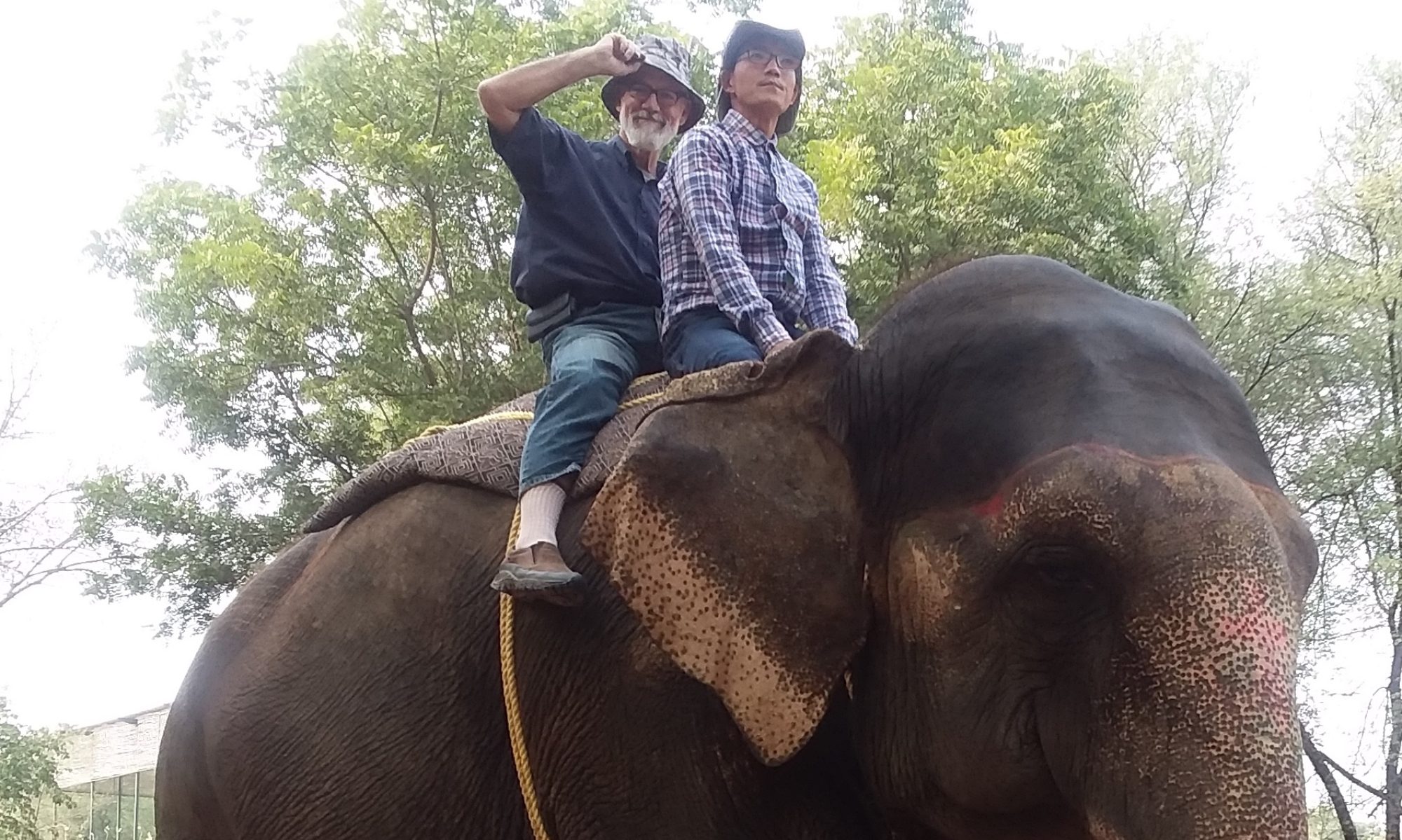by Indrajit Sundaram
In the previous blog post Mumbai Marches on its Stomach, I had mentioned that food isn’t the only thing in the gaps in Mumbai’s rush where both the simple and the ultra can enjoy themselves. I took Hannah up to Malabar Hill, the uber-rich Beverly Hills of Mumbai, where the famous Hanging Gardens are. Since I’ve been a child, I’ve looked for where the Gardens were hanging from, and till now have never found these mysterious hooks. I’ve even looked for gibbets, cleverly disguised as lamps, just in case I hadn’t understood the ‘Hanging’ part, but in vain. I stay baffled. Nevertheless, Hannah and I were able to enjoy the feel of the park and the sight of all of the Marine Drive seafront from the viewpoint, regardless of the state or manner of the Gardens’ suspension.

The Hanging (?) Gardens
Just adjoining the, presumably Hanging, Gardens is the Tower of Silence, sacred to Parsis (the Zoroastrian community which had fled persecution in Persia and come to India between the 8th and 10th century CE). This jungle-hidden Parsi sanctum is where their dead are placed after the last rites, up in a stone tower for the birds of prey to come and get their sustenance. It’s a quiet, forested, peaceful place, closed to non-Parsis, the outer-courts of which I had had the privilege to visit when I had helped out a group of Parsi friends, playing guitar for them when they had gone hospital visiting to sing for the sick. I’ve always loved the strong community and familial bonds that Parsis have.
Anyway, we left upbeat Malabar Hills, which by the way, is really close to Peddar Road, the uber-rich Beverly Hills of Mumbai. Peddar Road is not far from the Altamount, Nepean Sea and Breach Candy Roads, which are the uber-rich Beverly Hills of Mumbai. We came down to the Marine Drive boulevard, the long, curved, sea-front road ending in the Nariman Point Land’s End, also the uber-rich Beverly Hills of Mumbai. Just kidding. It’s only uber-rich. That’s why small-towners like Hannah and me always look for the cracks where we can feel comfortable.
We found that crack at the Land’s End, watching the sunset, salt sea-breeze in our faces, the stone parapet warm under us in the cool evening. Hannah and I spent the hour watching the sun go down on a couple of late fishing boats, dark homely shapes in the shimmering, light-shot water. I watched the simple fisher-folk gathering in the nets, the towering Oberoi Sheraton Hotel and the traffic sparkling behind us in the growing dusk, surrounded by Mumbai’s minding-their-own-business crowd, feeling privileged to have space and freedom to enjoy the moment, and Hannah fell in love with Mumbai, just as I did all over again, in spite of all the uber-richness.


This made all the difference for us as we spent the last couple of days in Mumbai exploring the cracks. Being a person who enjoys museums, I’m very thankful that Hannah does too. She has, in fact, even been known to vanish for long periods in a museum, a bit like Jesus hanging out in the temple after his bar mitzvah. On retracing the many steps back, I’ve found her standing in front of some exhibit, poring over it, oblivious to anything else. In her words, she really connects to the stories and events attached to what she’s looking at. I think she sees in her mind’s eye, a replay of things that happened to real people long ago. I guess it’s people like Hannah who keep things from being forgotten by reliving and then expressing those stories in new ways.
I had really wanted to take Hannah to the museum, and I’m glad we went, not the least because of something really odd we discovered. We were in a hall of ancient statues and figurines, and while I love museums, I’m not a dweller in them, so I had moved on and occupied myself with other exhibits. Suddenly, Hannah, appearing strangely excited, came up behind me, interrupting my rapt attention towards sundry pieces of pottery with an insistent, ‘Come and take a look at this!’.
I went, slightly reluctantly, my reverie broken like the pottery. She took me to a glass case insisting that I look carefully. I did, but like the Invisibly Suspended Gardens, I could not see anything invisible, other than the Buddha-like figure seated in eternally suspended meditation. When she finally insisted that I read the placard below it, I got the surprise of my life. The figure was of a Kagyupa monk.
‘Well, so what?’ says you.
Well, my wife’s maiden name was Cargay, which is the anglicised version of Kagaypa, which is the simplified form of Khagyupa, which is the Sikkimese clan my father-in-law belonged to. Was this the statue of an ancestor?? It turned out that the Kagyupas were not dynastic, but rather an order of Buddhist monks originally from Tibet. It appears that their evangelistic efforts had had an eventual impact on Sikkim, resulting in the lineage of my father-in-law taking the title. It then made sense why they had had a monastery associated to the family, from which my father-in-law parted when he was attracted by the teaching of a very different, unmonkly man, a distant Nazarene living in the area of Galilee about two millennia ago.

The Cargay Monk
We left the museum, musing, enjoying the golden evening sunshine playing on the green museum lawns. Who would have thought that Hannah would connect with a little piece of her Himalayan lineage from the distant past, in Mumbai, far from the Himalayas? From ancient, frozen pieces of time, we were soon extracted and swallowed up by the lights and shops of the Colaba Causeway, and later, inching my way through the jostling midnight crowds, Hannah looking for a tank-top, the silent Kagyupa monk in his silent, sterile world was soon a distant memory.
I guess this is why I still like Mumbai, the most cosmopolitan of our four metropolitan cities. It’s the one big city where you can find a true niche to do what you want to do, be who you really are, or even want to be, and find your own tribe if you stay and explore long enough. And if you stay, you may just find the sun that ‘pours down like honey’, as Leonard Cohen would put it, on this city of cities.
